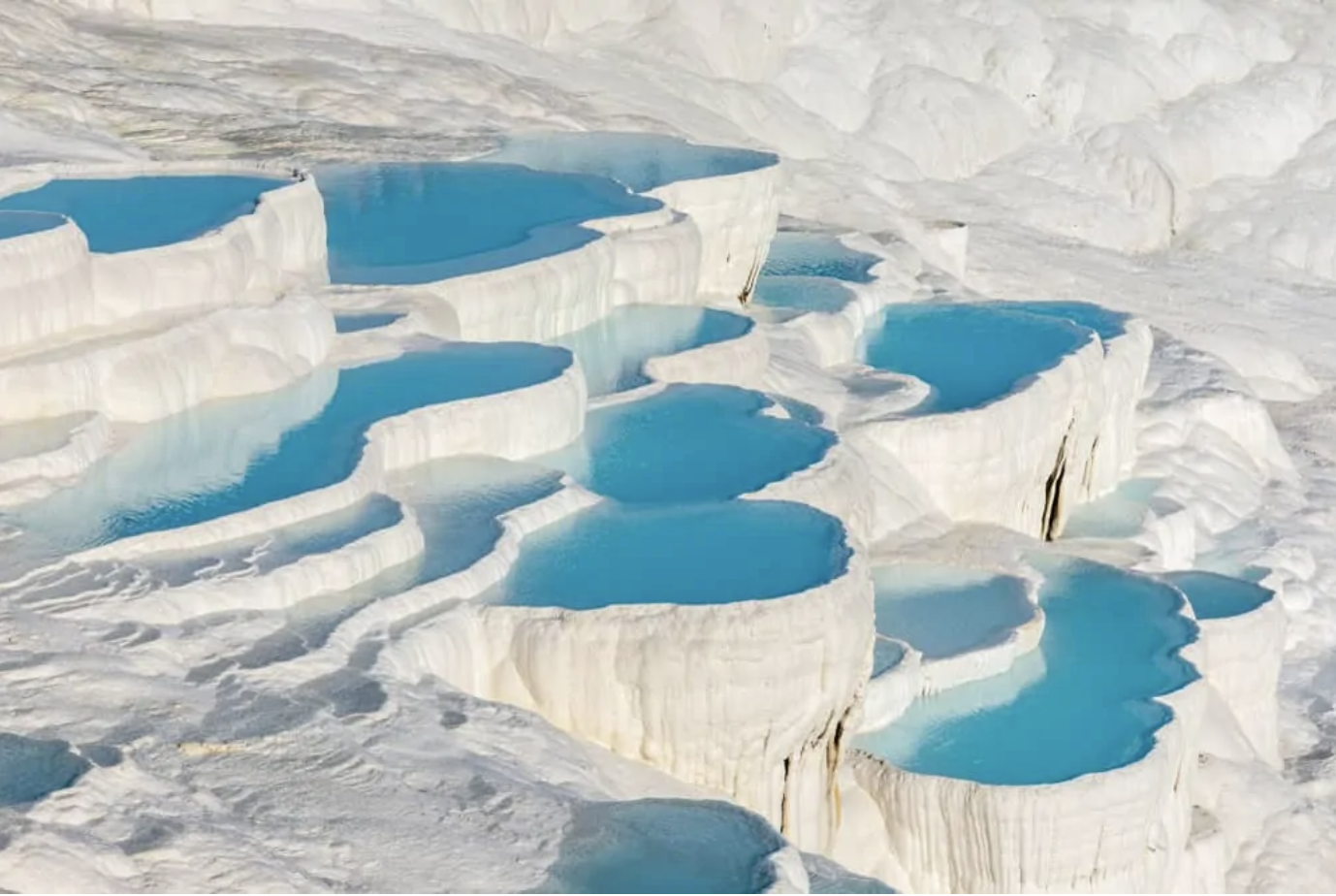So, at Hierapolis there is an amazing rock formation and the reputed Gateway to Hell. Pliny visited and reported that Priests took an animal to the place of sacrifice, and the animals just keeled over and died while the accompanying Priests survived to tell the tale.
Recent investigation has shown it to be a volcanic vent which, at times, is 80% toxic CO2. The suggestion is that the animals with their noses to the ground got a fatal dose while the priests lived to walk away.
This is the BBC web site with some great photos and below is the text from Salon IFA the newsletter of the Society of Antiquaries.
https://www.bbc.com/travel/article/20210629-turkeys-mysterious-portal-to-the-underworld
Foom Salon IFA
The BBC recently reported this fascinating story. The ancient town of Hierapolis, situated in modern-day Turkey, is famous for its dramatic and otherworldly rock formations, known as travertines, which cascade

down the hillside in perfect white basins and waterfalls. Founded in the second century, Hierapolis became a Roman town in 133AD and subsequently grew as a popular spa town, but it was also notorious as the location of the ‘Gate to Hell’, a portal to the underworld.
It was widely believed that Hierapolis was built upon an entry to the underworld, where the three-headed Cerberus bellowed out toxic breath, killing passers-by on behalf of his master, the god of the underworld, Pluto. A shrine, known as the Ploutonion, was built on the site and rituals were held where, as Pliny the Elder and Strabo both describe, priests would lead an animal into the shrine as an offering, and the animal would immediately drop dead while the priest survived. Strabo writes ‘I threw in sparrows, and they immediately breathed their last and fell’.
In 2013, scientists decided to investigate these claims. Hardy Pfanz, a volcano biologist from Germany’s University of Duisburg-Essen wondered if the portal could be a volcanic vent and went to investigate. He found ‘dozens of dead creatures around the entrance’, confirming the histories, and was able to test the air, revealing that the Ploutonion was in fact built on a volcanic vent that spewed out air that was 80% toxic

carbon-dioxide. The town sits on a volcanic fault, which was also the reason for the earthquakes that levelled the city in 17 AD, 60 AD, and again in the 17th and 14th Centuries.
One mystery remained; how did the priests survive and the animals perish? Returning the following year, Pfanz discovered that, in good weather, the carbon-dioxide dissipated quickly, but at night, when it is cooler ‘it pools in the arena, creating a lethal lake of gas at ground level’. He believes that the animals, who had their noses lower to the ground, would have quickly suffocated, while the priests, standing taller would have survived.
Image credits: Travertines, Shutterstock; Ploutonion, BBC Bella Falk
Discover more from And Did Those Feet
Subscribe to get the latest posts sent to your email.
